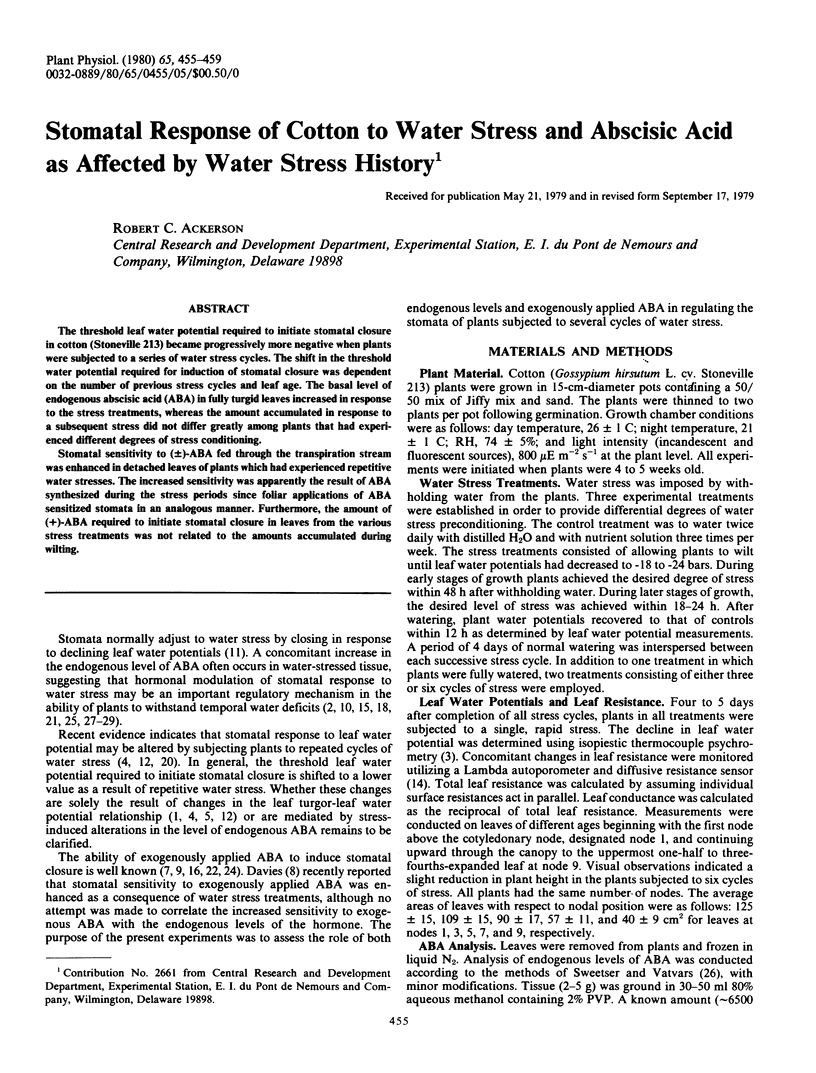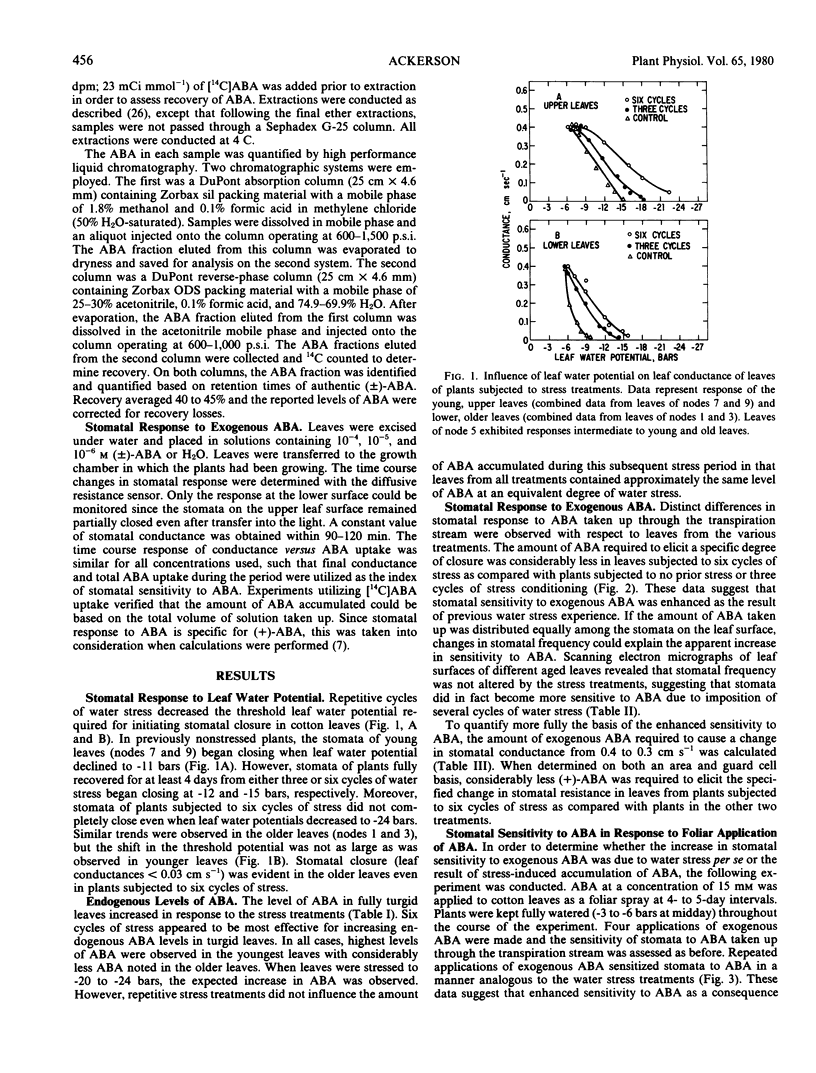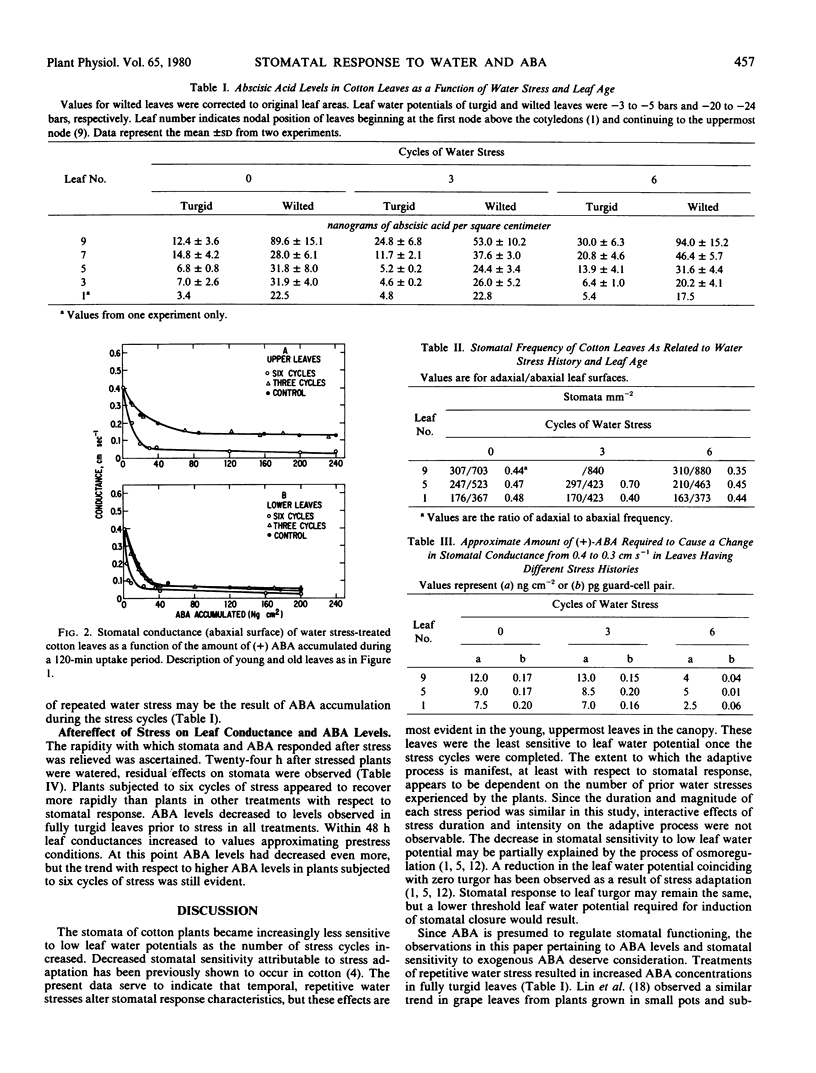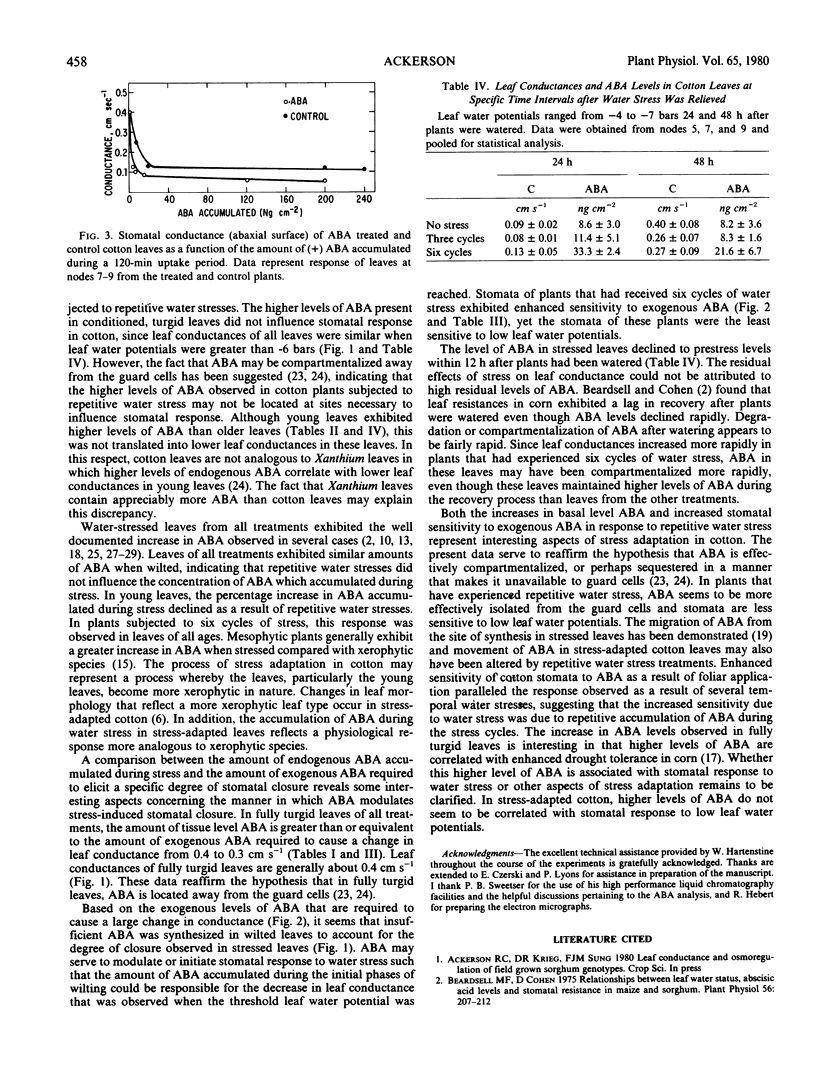Abstract
The threshold leaf water potential required to initiate stomatal closure in cotton (Stoneville 213) became progressively more negative when plants were subjected to a series of water stress cycles. The shift in the threshold water potential required for induction of stomatal closure was dependent on the number of previous stress cycles and leaf age. The basal level of endogenous abscisic acid (ABA) in fully turgid leaves increased in response to the stress treatments, whereas the amount accumulated in response to a subsequent stress did not differ greatly among plants that had experienced different degrees of stress conditioning.
Stomatal sensitivity to (±)-ABA fed through the transpiration stream was enhanced in detached leaves of plants which had experienced repetitive water stresses. The increased sensitivity was apparently the result of ABA synthesized during the stress periods since foliar applications of ABA sensitized stomata in an analogous manner. Furthermore, the amount of (+)-ABA required to initiate stomatal closure in leaves from the various stress treatments was not related to the amounts accumulated during wilting.
Full text
PDF




Selected References
These references are in PubMed. This may not be the complete list of references from this article.
- Beardsell M. F., Cohen D. Relationships between Leaf Water Status, Abscisic Acid Levels, and Stomatal Resistance in Maize and Sorghum. Plant Physiol. 1975 Aug;56(2):207–212. doi: 10.1104/pp.56.2.207. [DOI] [PMC free article] [PubMed] [Google Scholar]
- Dubbe D. R., Farquhar G. D., Raschke K. Effect of abscisic Acid on the gain of the feedback loop involving carbon dioxide and stomata. Plant Physiol. 1978 Sep;62(3):413–417. doi: 10.1104/pp.62.3.413. [DOI] [PMC free article] [PubMed] [Google Scholar]
- Jones M. M. Osmotic adjustment in leaves of sorghum in response to water deficits. Plant Physiol. 1978 Jan;61(1):122–126. doi: 10.1104/pp.61.1.122. [DOI] [PMC free article] [PubMed] [Google Scholar]
- Jordan W. R., Brown K. W., Thomas J. C. Leaf Age as a Determinant in Stomatal Control of Water Loss from Cotton during Water Stress. Plant Physiol. 1975 Nov;56(5):595–599. doi: 10.1104/pp.56.5.595. [DOI] [PMC free article] [PubMed] [Google Scholar]
- Kanemasu E. T., Thurtell G. W., Tanner C. B. Design calibration and field use of a stomatal diffusion porometer. Plant Physiol. 1969 Jun;44(6):881–885. doi: 10.1104/pp.44.6.881. [DOI] [PMC free article] [PubMed] [Google Scholar]
- Kriedemann P. E., Loveys B. R., Fuller G. L., Leopold A. C. Abscisic Acid and stomatal regulation. Plant Physiol. 1972 May;49(5):842–847. doi: 10.1104/pp.49.5.842. [DOI] [PMC free article] [PubMed] [Google Scholar]
- Raschke K., Pierce M., Popiela C. C. Abscisic Acid Content and Stomatal Sensitivity to CO(2) in Leaves of Xanthium strumarium L. after Pretreatments in Warm and Cold Growth Chambers. Plant Physiol. 1976 Jan;57(1):115–121. doi: 10.1104/pp.57.1.115. [DOI] [PMC free article] [PubMed] [Google Scholar]
- Raschke K., Zeevaart J. A. Abscisic Acid Content, Transpiration, and Stomatal Conductance As Related to Leaf Age in Plants of Xanthium strumarium L. Plant Physiol. 1976 Aug;58(2):169–174. doi: 10.1104/pp.58.2.169. [DOI] [PMC free article] [PubMed] [Google Scholar]
- Sweetser P. B., Vatvars A. High-performance liquid chromatographic analysis of abscisic acid in plant extracts. Anal Biochem. 1976 Mar;71(1):68–78. doi: 10.1016/0003-2697(76)90012-9. [DOI] [PubMed] [Google Scholar]
- Twente J. W., Twente J. A. Regulation of hibernating periods by temperature. Proc Natl Acad Sci U S A. 1965 Oct;54(4):1044–1051. [PMC free article] [PubMed] [Google Scholar]
- Zabadal T. J. A water potential threshold for the increase of abscisic Acid in leaves. Plant Physiol. 1974 Jan;53(1):125–127. doi: 10.1104/pp.53.1.125. [DOI] [PMC free article] [PubMed] [Google Scholar]


